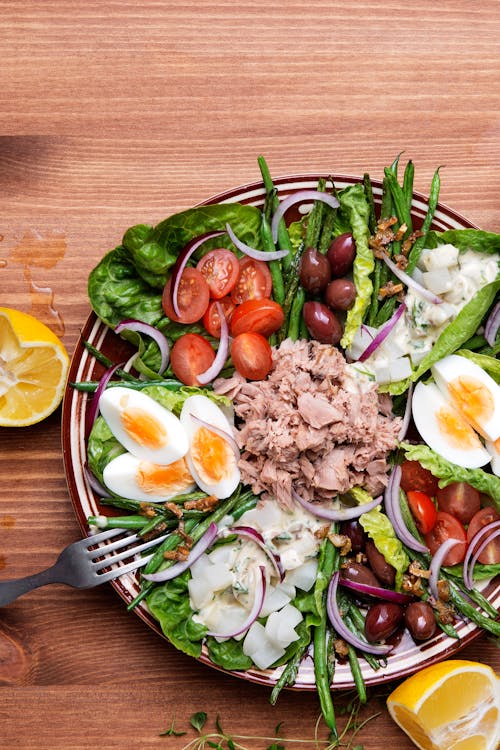Low carb sushi rolls
Ingredients
- 1½ lbs 650 g cauliflower
- 2 tbsp 2 tbsp rice vinegar
- ¼ tsp ¼ tsp salt
- 4 4 nori sheetnori sheets
- 5 oz. 140 g salmon, boneless filletsalmon, boneless fillets
- 3 oz. 85 g cucumber
- 1 (7 oz.) 1 (200 g) avocadoavocados
- 1 oz. 28 g daikon
- ¼ cup 60 ml mayonnaise or vegan mayonnaise (optional)
- 1 tbsp 1 tbsp sesame seeds (optional)
- 2 oz. 55 g pickled ginger
- ¼ cup 60 ml tamari soy sauce
- 1 tbsp 1 tbsp wasabi paste

Instructions
- Using a grater or food processor, shred the cauliflower into rice-sized pieces. Steam or microwave the cauliflower rice on high for 2-3 minutes. Allow to cool completely.
- Squeeze out excess liquid using a cheesecloth or a clean kitchen cloth.
- Add rice vinegar and salt.
- Assemble the sushi rolls. Start by placing the rectangular nori sheets with the shiny side down on a bamboo mat (included in most sushi kits).
- Spread the cauliflower rice in a ½ inch (1 cm) thick even layer so it covers ¾ of the sheet. Leave some space at the far edge so you can close the roll later.
- Add thinly sliced salmon, cucumber, avocado, and daikon in the middle. Add some mayonnaise and sesame seeds, if you're using.
- Start rolling firmly but carefully, and close by brushing water on the rice-free edge.
- Lift from the mat and cut with a very sharp damp knife. Serve with ginger, soya and wasabi paste.
Tip!
You can add cream cheese to the cauliflower rice for extra flavor and stickiness. Add 1/4 cup (55g) of cream cheese per serving to the cauliflower rice with the vinegar and salt in step 3.
How many rolls per serving?
We are counting a well-packed nori sheet per serving, which corresponds to a lighter meal of 8-10 sushi bites.
Filling
The only limit is your imagination when it comes to filling the sushi rolls. Here are suggestions for alternative fillings: omelet, shrimp, crab, roe, tuna — both raw and canned, white fish, mackerel, pickled herring, tofu, zucchini, carrot, lettuce, chillies, peppers and cilantro.
Is it safe to eat raw fish?
If you buy your fish from a fish market, ask for sushi-grade salmon. To completely eliminate the risk of parasites, fresh salmon should be frozen — especially wild salmon. One day is enough if the fish is already sliced. Otherwise freeze for 2-3 days if it's a whole fillet.






























